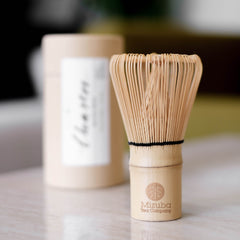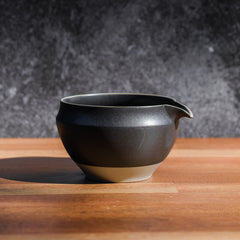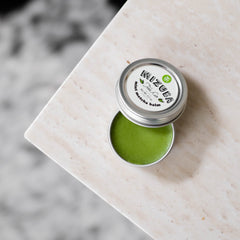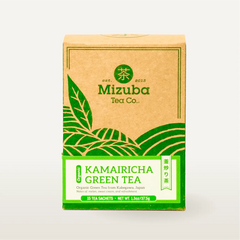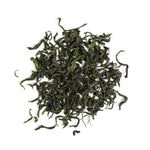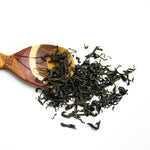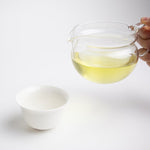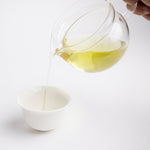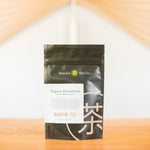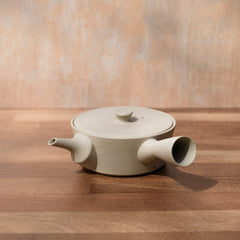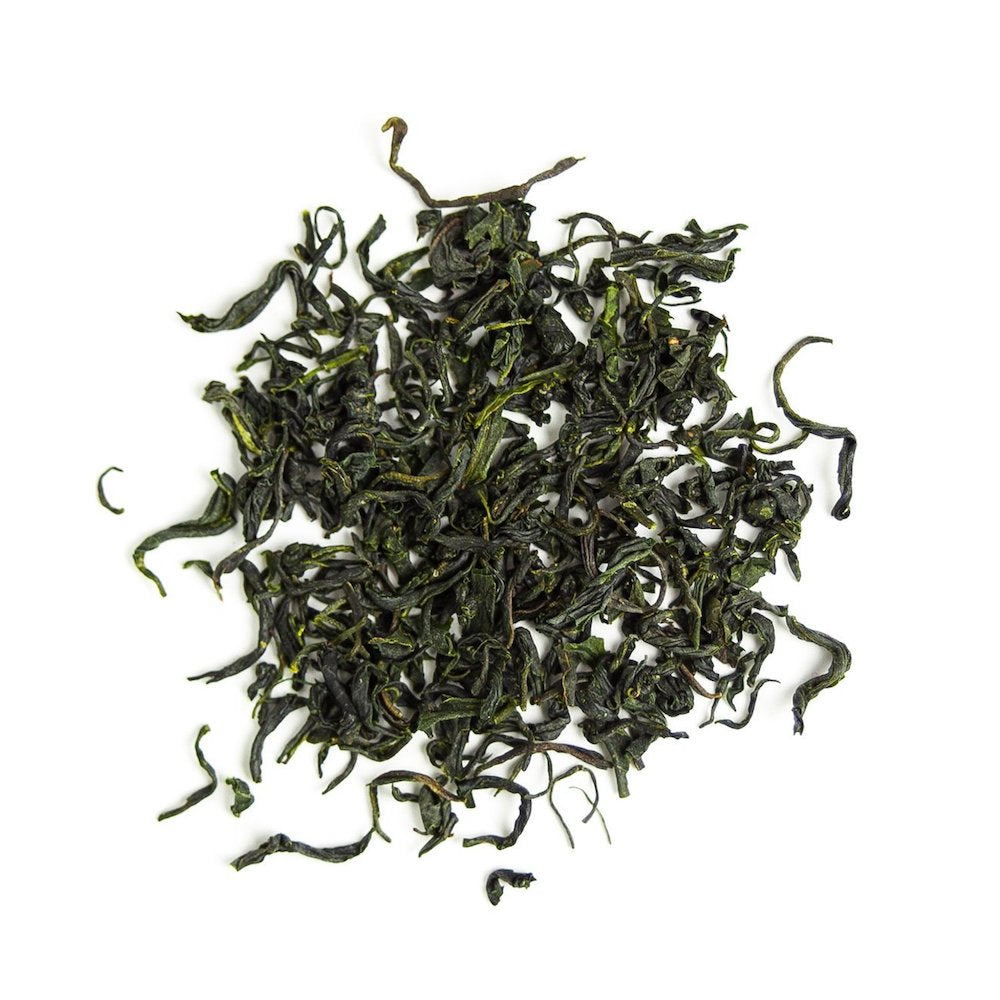

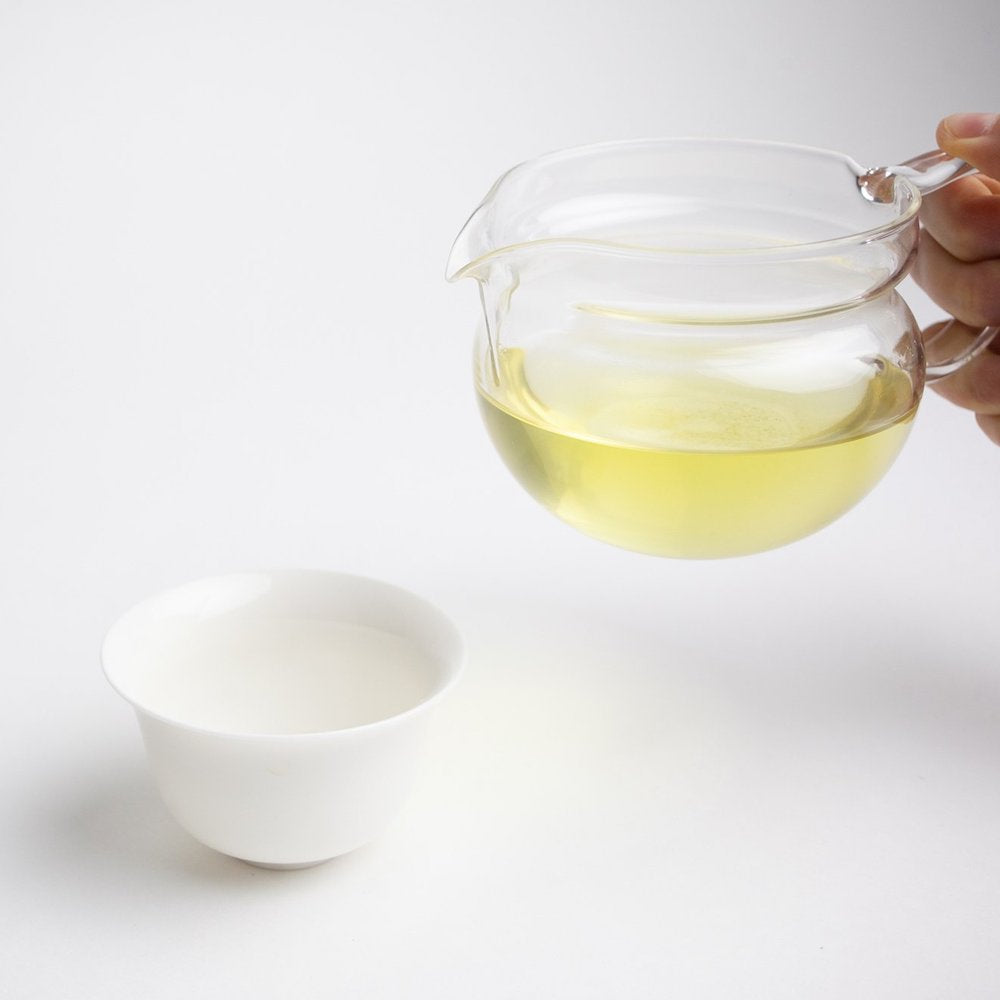
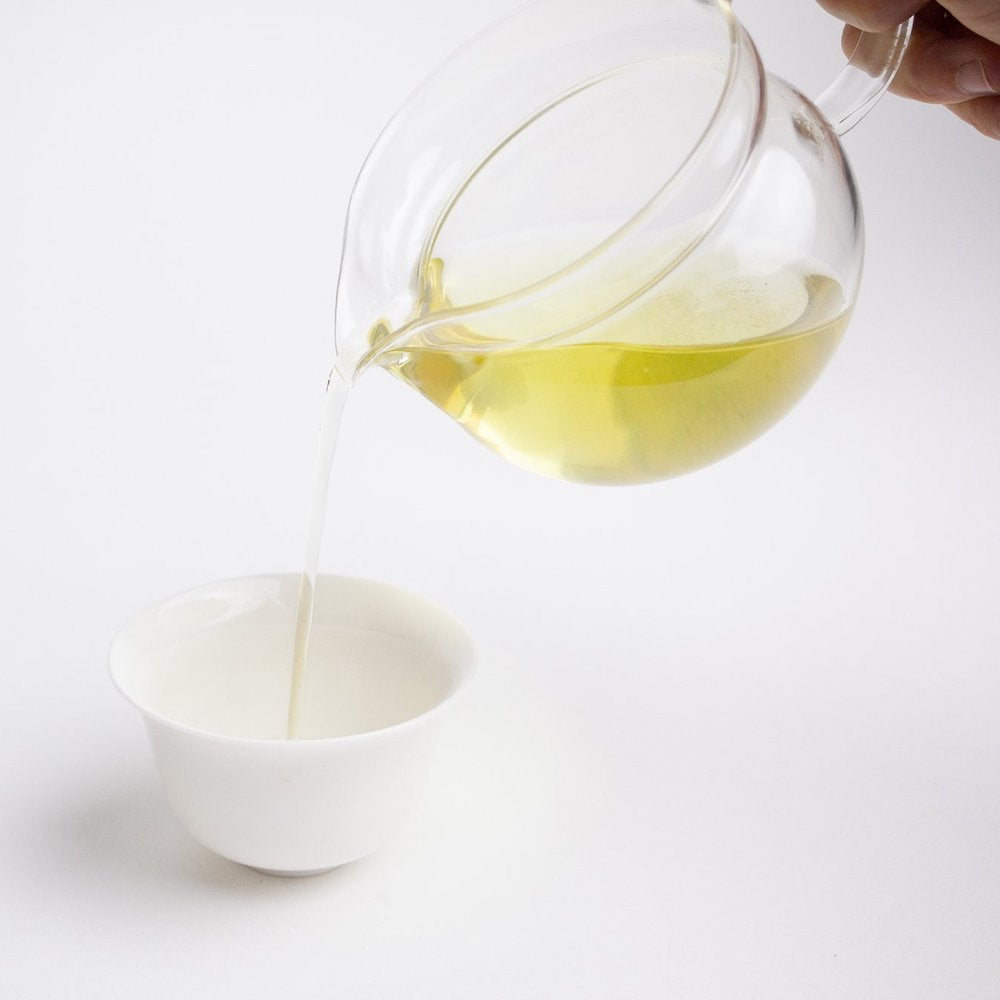
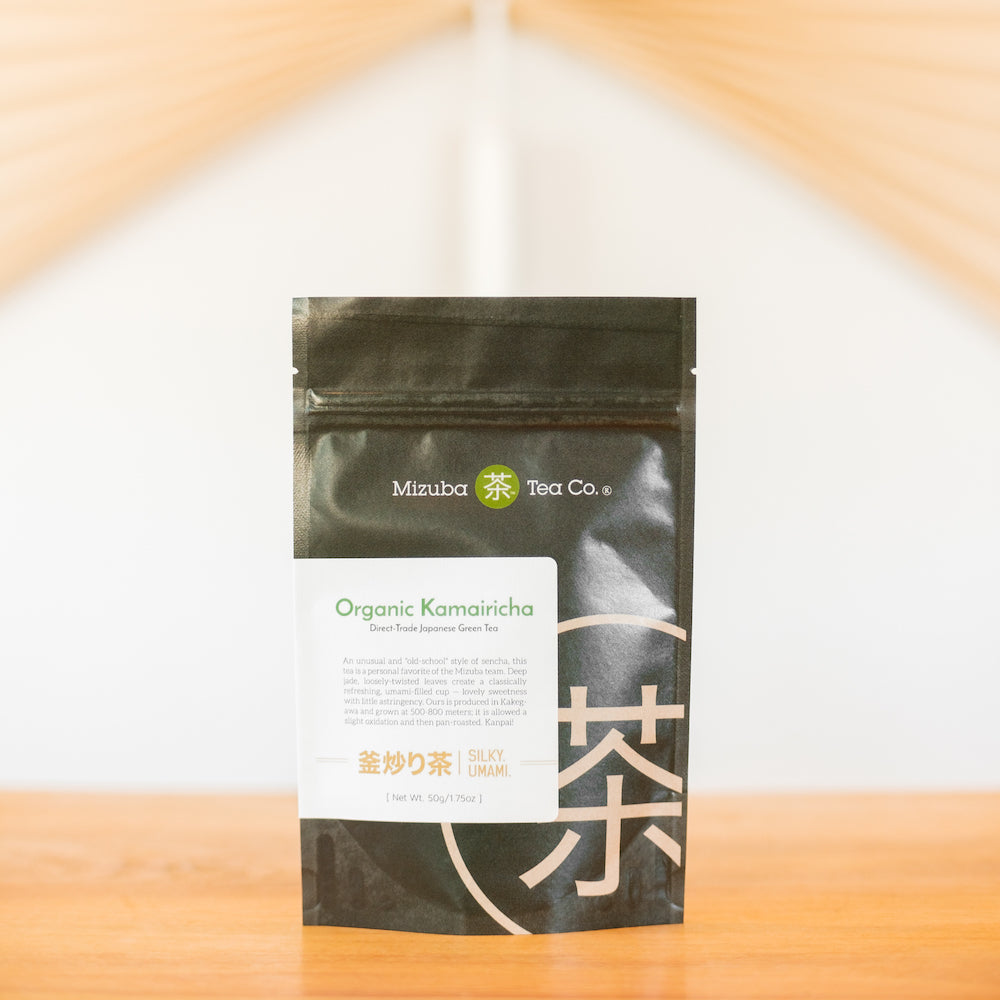
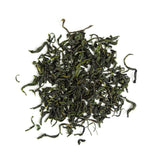
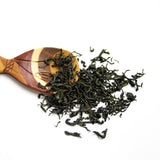

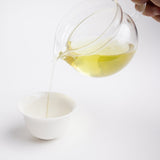
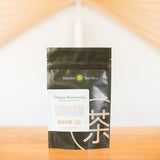
Organic Kamairicha
- Description
- Tasting Notes
An unusual and "old-school" style of sencha, kamairicha is a personal favorite of the Mizuba team. Deep jade, loosely-twisted leaves create a classically refreshing, umami-filled cup — lovely sweetness with little astringency. Ours is produced in Kakegawa and grown at 500-800 meters; it is allowed a slight oxidation and then pan-roasted. In fact, kamairicha is directly translated as, "pan-fired tea." Kanpai!

Aroma: deep umami sweetness; honeydew melon, stone-fruit, papaya. As the water hits the tea a deep, savory toasted barley note appears.
Flavor profile: sweet cream, cornsilk, and melon reveal themselves in the brew. This tea exhibits a silky body and mouthfeel with a rich flavor. The second steep will reveal much more vegetal, deep spinach tones and robust, brothy umami. A classic Japanese green tea!
Pairs Perfectly With:
Store in a cool, dark location. Best consumed within 3 months.
Organic Kamairicha
Brew Guide

180ml (6oz)

7g (2tsp)

170ºF

1 minute for the first steep, up to 2 minutes second steep.
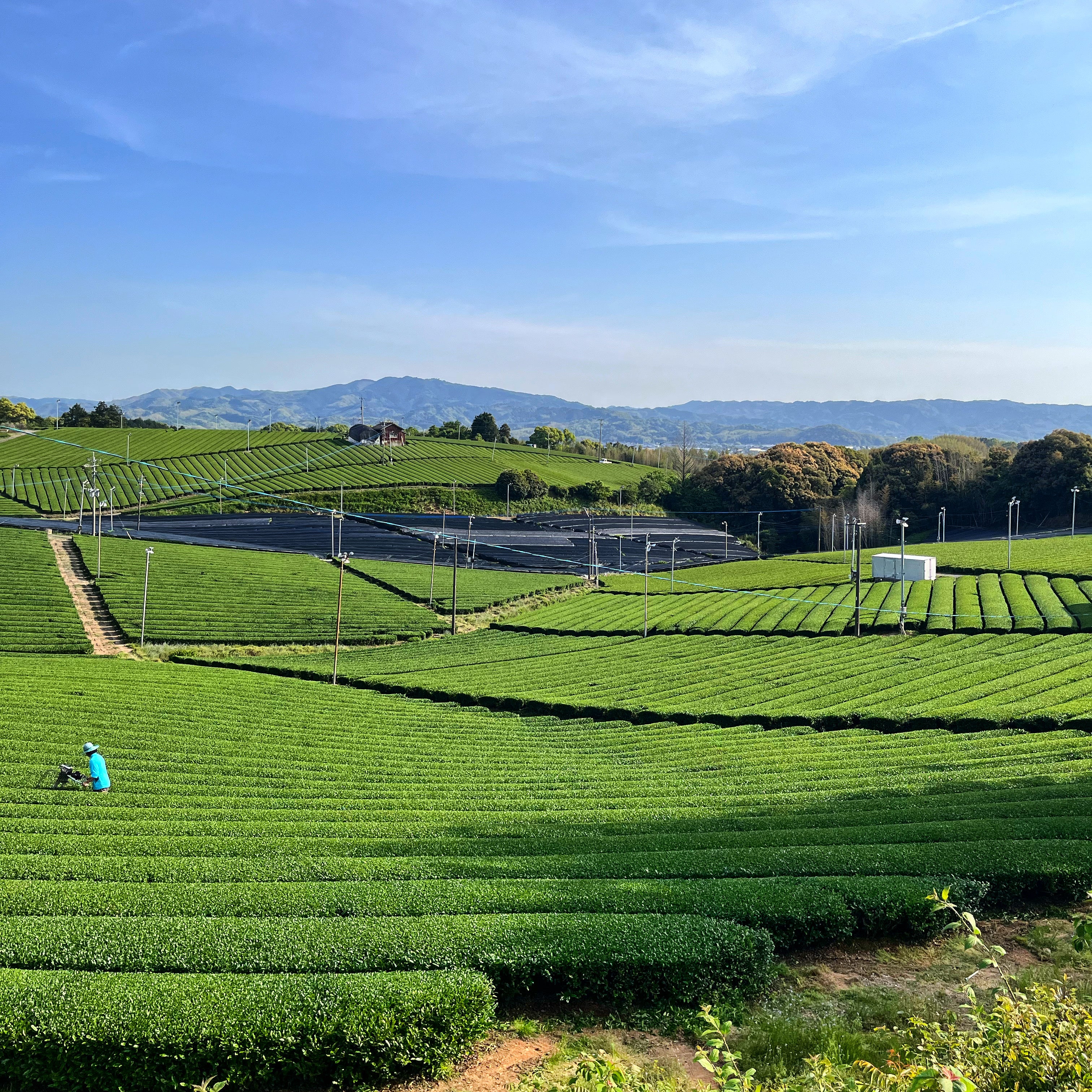
What is Kamairicha?
A relatively rare tea, kamairicha represents only about 2% of Japan's tea production. When tea culture was brought to Japan from China, tea leaves were processed by pan-firing tea leaves to halt oxidation.
Nearly all tea leaves from Japan are steamed, but kamairicha retains the old "Chinese style" of pan-firing, as well as a loose, twisted leaf (as opposed to the fine, needle roll in present-day sencha).
This tea represents a hallmark of the historical progression of tea-making styles in Japan. While Chinese in style, the aroma and taste differ greatly from its Chinese counterpart. The prized umami flavor is present, but there is also a beautiful sweetness with far less astringency than a classic sencha or Chinese green tea. Quite a refreshing cup!
Tea Details
Location: Kakegawa, at 500-800m above sea level.
Harvest season: Nibancha (second harvest) which is preferred for the wilting process to allow for better aromas and flavor.
Cultivar: Koushun, a rare cultivar that only was introduced in the year 2000.
Process: harvested leaves are allowed to wilt and slightly oxidize — rather than the usual steaming to halt oxidation. Then the leaves are dried (often by simply drying in the sun), and in a less-common step for Japanese teas, gently roasted to halt oxidation. The leaves are not rolled.
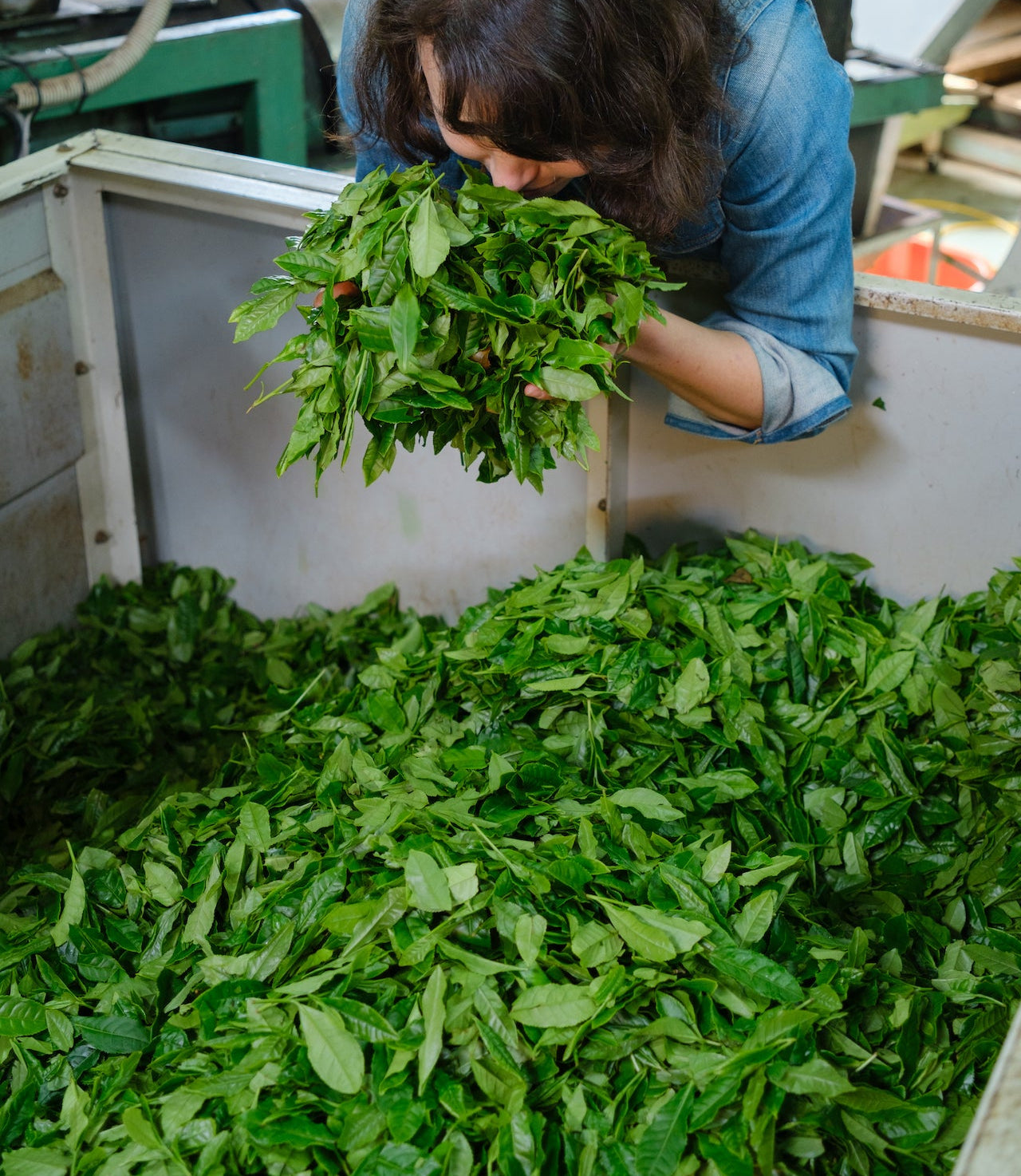
- Related products
- Recently viewed
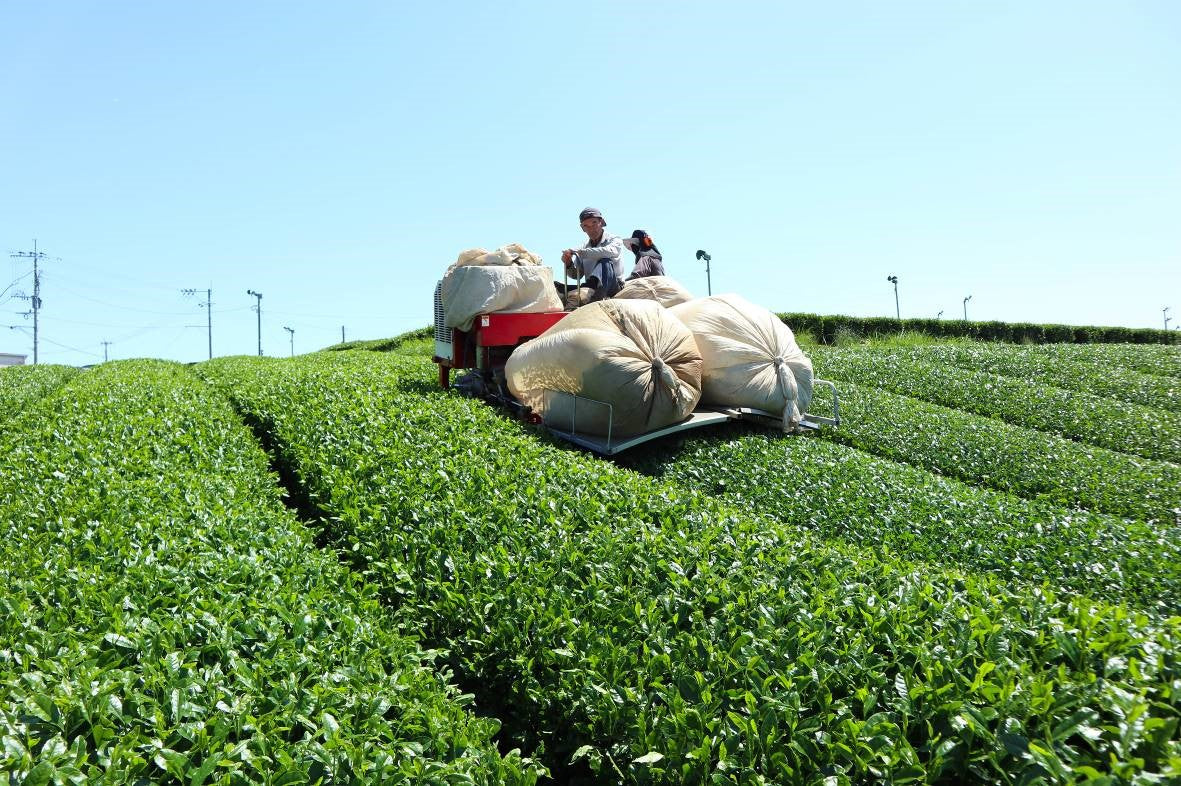
Featured post
A Guide to Harvesting Tea Leaves: An Essential Process in Japanese Green Tea
As with all processes in crafting Japanese green tea, harvesting tea leaves is an intricate skill that takes years to master. Much of the year is dedicated to the elaborate...


